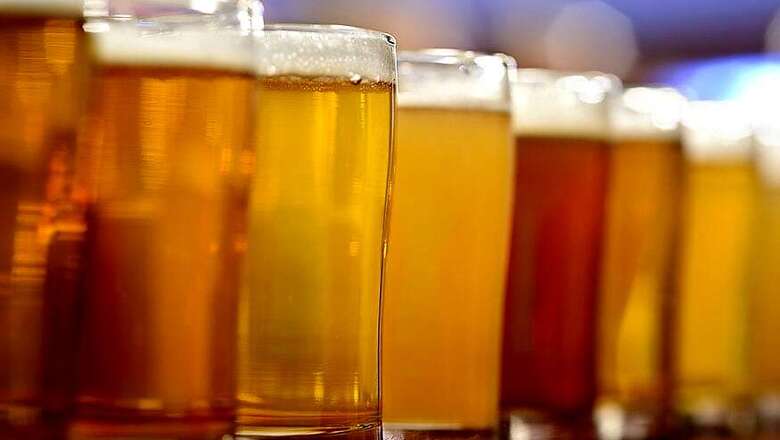
views
 ‘The Scriptures are against it. God!’
‘The Scriptures are against it. God!’
‘Gosh! It's against the tenets of my religion.’
From time immemorial, such moral statements have been taking away the pleasure of warming up to one of the oldest pleasures of mankind: alcohol.
God. Religion. Faith.
But what if, the people whom we believe to be standing closer to the almighty with their ascetic life, selfless prayers and blind faith, brew the drink you want to guzzle down? And that too beer?
This is one of the many charms of drinking the Trappist beer, coming, most of them, all the way from Belgium. Chimay is a phenomenal name in the world of Trappist beers.
It was in 1850 that Prince Joseph de Chimay, a Belgian aristocrat, gifted the wild plateau of Scourmant to a small group of monks from the Westvleteren Abbey. They had already been producing Westvleteren 12, beer, in their mother abbey. But this should be something new, they decided. The first brew that was rolled out was a doppelbock in the true blue Bavarian style, but soon the monks were wise enough to go back to their tried and tested Westvleteren-style beer with low fermentation.
The monks bottled the dark variant, which was indeed of a Chimay Rouge, in bottles, some of them covered with tar.
In a period when plain water was considered ‘still’, any other kind of liquid bottled, especially if it came from an abbey, was considered more than heavenly.
Sales grew, but then, Wars, the First and the Second, broke out. Like many other abbeys, Chimay also took the brunt of the great wars, as German tanks and soldiers rolled in and set up bunkers in where stood an old abbey (They had already pulled it down). All the copper kettles used for brewing purposes were seized and melted to make weapons.
But the brotherhood in its long tradition had already seen many ups and downs in history. They used this recess as a moment to do hard work in the background. They sent one of their men, Brother Theodore to the Catholic University of Leuven to study deeper into the possibility of modernising their brewery. His mentor was none other than the brewing world's most famous scientist and scholar, Jean de Clerck.
The team created a miracle.
Theodore knew a radical change was long overdue in the brewing style at Chimay. So when he worked behind the recipe for Chimay White, he worked with extracts instead of the usual pellets and flowers as ingredients. Thus he wrested absolute control over the bitterness of the final product from batch to batch. It was a huge success in the world of beer. Soon, other abbey beers like Orval and Westvleteren followed suit, chucking out flowers and pellets and used extracts in their places.
Theodore also isolated a unique strain of yeast strain still used to brew Chimay.
The golden age of brewing thus dawned in the world of brewery.
Chimay takes its water also seriously. It has its own well to draw its precious liquid from. When it decided to produce Chimay White in La Trappe, another Trappist monastery in Netherlands, it insisted that it should use the water they ship in from their home brewery. The water is soft and low in minerals, low in calcium and magnesium, perfect in producing the kind of. Liquid manna they have been producing for long.
Today, you have various versions of Chimay beers to try out.
Check out the caps of beers to see what you drink -- Chimay Red, Chimay White and the dark, strong Chimay Blue. The last one began as a Christmas specialty, but as demands grew, it became a year-round product. Or, you can also taste the Grand Reserve Chimay is special with 9 per cent abv, and available in Magnum bottles.
No wonder, Chimay is today the largest selling Trappist brewery in the world.
(Manu Remakant is a freelance writer who also runs a video blog - A Cup of Kavitha - introducing world poetry to Malayalees. Views expressed here are personal)


















Comments
0 comment